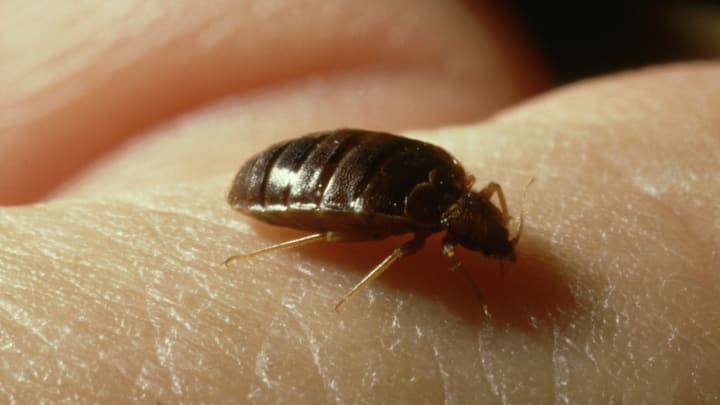Returning home from a vacation can be a difficult adjustment. Returning home with a fleet of bed bugs can be a nightmare. Even with advanced pest control methods, the bugs—which often take up residence in beds and furniture and feast on sleeping humans—can be hard to eradicate. Now, science is closer to understanding why.
In a study published in the journal Insects, biologists at Hiroshima University detail their efforts to successfully sequence the common bed bug (Cimex lectularius) genome. The maps, which authors describe as an unprecedented “near-error-free” look at the bug’s genetic make-up, reveal that certain mutations have made them resistant to insecticides.
The research team examined both insecticide-susceptible strains as well as resistant strains of the bug’s genome. The susceptible strains were sourced from bed bug samples collected over 60 years ago, while the resistant strains came from bed bugs descended from a population collected in a hotel back in 2010. The samples allowed for a direct comparison of their respective genomes and how they’ve changed over time.
Using pyrethroids (a common insecticide for bed bug infestations) as a gauge, researchers found that the contemporary bed bug was vastly more resistant to the chemical than the bugs collected decades prior.
“We determined the genome sequence of insecticide-resistant bed bugs, which exhibited 20,000-fold greater resistance compared to susceptible bed bugs,” Kouhei Toga, postdoctoral researcher and lead author, said in a statement. “By comparing the amino acid sequences between the susceptible and resistant bed bugs, we identified 729 transcripts with resistance-specific mutations.”
“Resistance” is a broad concept. Practically speaking, it means the bed bugs may have mutated to produce enzymes that help deactivate the insecticide—or their exoskeletons may have grown thicker to make absorption of the toxin harder. It’s a major reason why the bugs have staged a comeback after nearly being wiped out in the 20th century through the effectiveness of dichlorodiphenyltrichloroethane, or DDT—a potent pesticide. When that was banned in the 1970s, the bugs flourished. Armed with genetic armor, they’ve gone on a rampage.
“You can practically dip the bugs in the insecticide solution and they’ll still be alive afterwards,” Chow-Yang Lee, a professor of University of California, Riverside, who did not take part in the study, told BBC Science Focus.
Having a bed bug 20,000 times more durable than past populations sounds ominous. Fortunately, the bugs respond well (or rather, poorly) to heat treatment. The method raises the ambient temperature of infested homes (up to 135°F) in an effort to kill off both the bugs and their eggs. The tactic isn’t 100 percent effective, however; because not all exterminators are created equal, sometimes heat treatment can fail to reach all infested areas of a home.
The best way to avoid a bed bug problem is prevention. If you travel, try to keep your suitcase on a luggage rack or even in the bathtub to make it difficult for any bugs to climb inside. Once you return home, unpack in a garage or utility room and immediately toss your clothes in the dryer on high heat.
